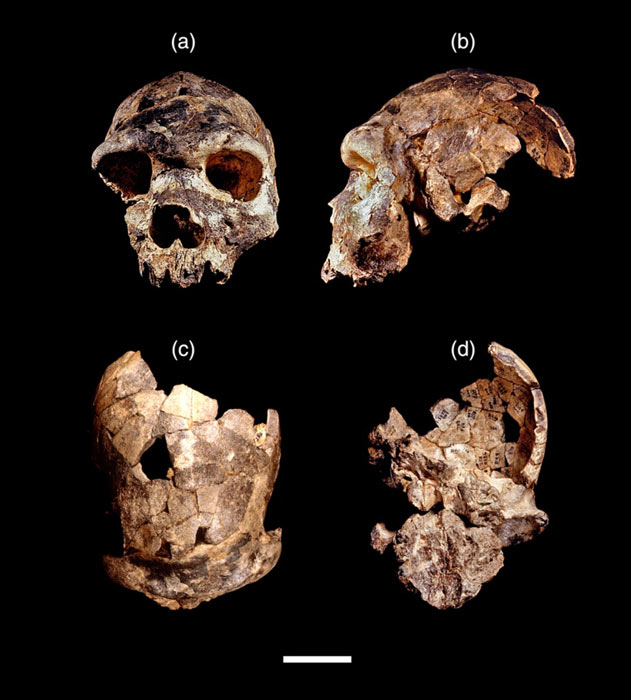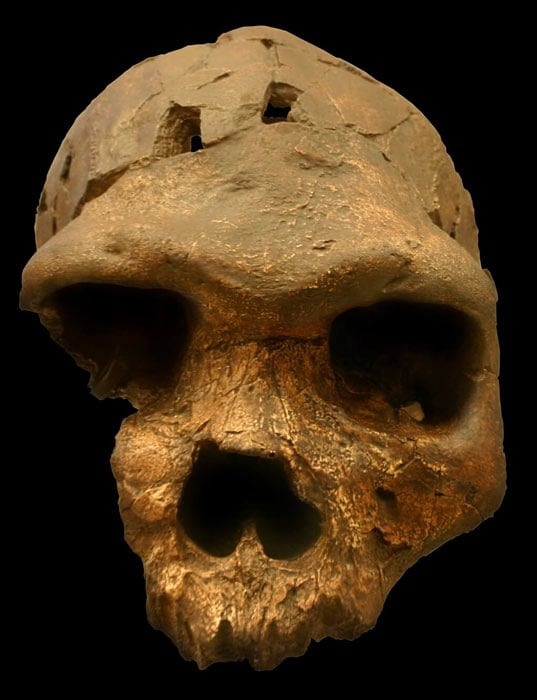A team of scientists claim that they have identified a new “ancient human ancestor” in Africa, which is causing quite a stir. The so-called Homo bodoensis lived in Africa during the Middle Pleistocene, around 600,000 years ago. A new study published in the journal Evolutionary Anthropology concludes that it is “a direct ancestor of modern humans.”
Dr. Mirjana Roksandic, who led the team of researchers from the University of Winnipeg, claimed that up until now talking about human evolution during this time period was “impossible due to the lack of proper terminology that acknowledges human geographic variation.”
In the new study, the researchers reassessed existing fossils from Africa and Eurasia all the way back to the Middle Pleistocene period. An article in Daily Mail explains that a skull was discovered in 1976 at Bodo D’ar, in the Awash river valley of Ethiopia, dated to about 600,000 years ago. It belonged to neither H. heidelbergensis or H. rhodesiensis , but to an entirely new species known as H. bodoensis , named after the location where it was discovered.
Discovering a New Human Ancestor is a Big Deal, But…
In a press release from the University of Winnipeg , Roksandic stresses that “naming a new species is a big deal,” because the International Commission on Zoological Nomenclature “allows name changes only under very strictly defined rules.” She explained that the species went extinct around 200,000 years ago, long before modern humans migrated out of Africa. The researcher said the findings “will help to cut the Gordion knot” and allow a much clearer understanding of the Middle Pleistocene.
The newly discovered “so-called” human ancestor had a short, stocky body which was suited for conserving heat (energy) in colder environments. Males of the species weighed around 140 lb (63.5 kg) and measured approximately 5 ft 9 (175 cm) tall. Females weighed about 30 lbs (13.6 kg) less and averaged about 5 ft 2 (157.5 cm) tall.
The researchers highlighted that “going forwards, most Middle Pleistocene humans from Africa and some from Southeast Europe will be classified as H . bodoensis , while many from the latter continent will be reclassified as Neanderthals.” The paper said these terms need to be “clear in science, to facilitate communication.” The authors insisted that rules “should not be treated as absolute when they contradict the fossil record.”

Cranium of Homo bodoensis. (Jeffrey H. Schwartz / Evolutionary Anthropology )
No Everyone Is Buying Into the New Human Ancestor
The team of researchers argue that H. bodoensis lived widely throughout Africa for hundreds of thousands of years. They go so far as to suggest the species may also have wandered into the eastern Mediterranean. While this “apparently” new species of extinct human has been named Homo bodoensis, this is all quite controversial according to an article in New Scientist .
Homo bodoensis is only “the proposed name” for a group of hominins that lived in Africa during the Middle Pleistocene. However, technically, they are called the Chibanian and they lived in Africa between 770,000 and 126,000 years ago. For one, Chris Stringer at the Natural History Museum in London is highly skeptical of the claim that the Bodo cranium is our direct ancestor.
In 2019 Stinger’s team published a study on the evolution of the human face. This research found that the Bodo cranium belonged to a species which had “gone down a different evolutionary path to our species,” a conclusion which would contradict the new claims made by Roksandic.

The new study argues that the Bodo D’ar skull found in Ethiopia belongs to a new species of ancient human ancestor. (Ryan Somma / CC BY-SA 2.0 )
It’s a Case of Pick Your Paper
In conclusion, professor Stinger says the Bodo skull does not represent a direct human ancestor. This prevailing entanglement of ancient species is known to scientists as “the muddle in the Middle Pleistocene.” The wrangle lies in the complexity of categorizing which fossils belong to which species. Only with this data can one calculate how widespread each species was, and how far they spread and interbred with each other, according to Stinger. We, the reader, are left wondering once again whether a new human ancestor has actually been discovered, or not.
Top image: Artist rendering of the so-called “new human ancestor”, Homo bodoensis. Source: Ettore Mazza / University of Winnipeg
By Ashley Cowie
 RSS Feed
RSS Feed















 October 31st, 2021
October 31st, 2021  Awake Goy
Awake Goy  Posted in
Posted in  Tags:
Tags: 













